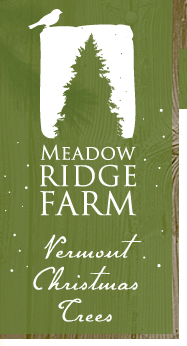Christmas tree farming is the original green industry. Real Christmas trees are natural, biodegradable and renewable. Christmas trees grown on farms are an agricultural crop. To ensure a constant supply, we replant at least one new seedling for every tree harvested (we’d go out of business if we didn’t!). While they’re growing, Christmas trees absorb carbon dioxide and other gases while emitting fresh oxygen. The National Christmas Tree Association reports that 1 acre of Christmas trees produces the daily oxygen requirement for 18 people. With about 8 acres of trees growing, our farm is producing oxygen for 144 people. After they are harvested and enjoyed at Christmas, trees can be recycled. Many local communities offer drop-off locations where Christmas trees can be chipped to produce mulch, used as whole trees in slope stabilization projects, or even burning in biomass energy plants to produce green electricity. Our trees also provide habitat for a wide range of wildlife. Over the years, walks through the trees have resulted in countless sightings of song birds, turkey, deer, fox, rabbits—and even one very large moose. Christmas tree farming also keeps land open and in agriculture—an important consideration in a time of heavy pressure to develop land. Artificial trees, on the other hand, are a petroleum-based product containing many other chemical compounds typically produced in China. “One way to protect the environment is to choose renewable materials and energy wherever possible,” explains Dr. Patrick Moore, co-founder of Greenpeace, in arguing in favor of real Christmas trees. “Artificial trees are made from non-renewable plastics and petroleum-based products. Although some people claim that these trees last a lifetime, most are thrown away within nine years—and remain in landfill sites for centuries.”
|
|















